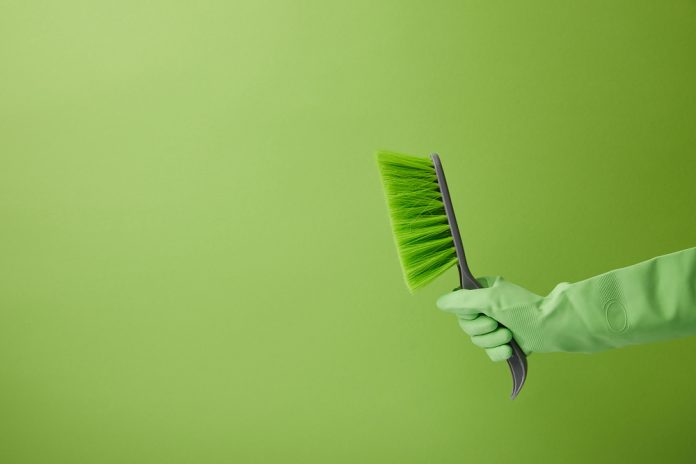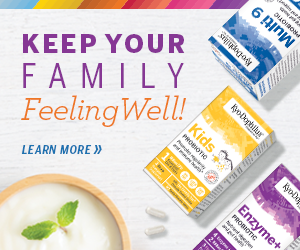
Spring cleaning is a rite of passage: clearing out the cobwebs and stuffiness of winter and opening up your living space to the freshness, cleanliness, and energy of spring. So why would you want to use synthetic chemicals and harsh cleansers to announce this time of year? You wouldn’t! So let’s do spring cleaning naturally.
It’s no secret that indoor pollution is worse than outdoor pollution. The US Environmental Protection Agency warns the public about the many different indoor air quality issues you should address, from off-gassing from furniture and carpeting to radon, asbestos, mold, and the use of household cleaners. This latter topic is what we are going to look at.
Exposure to conventional household cleaning products can cause a wide variety of symptoms, ranging from eye and throat irritation to dizziness, fatigue, headache, worsening of asthma and other respiratory conditions, and even cancer. That’s because they contain hazardous ingredients such as chlorine, phosphates, sulphates, phthalates, parabens, perfumes, dyes, or petroleum products. Cleaning products that contain these toxins are a danger to humans as well as your pets.
Read about spring cleaning your kitchen
Everyone has a different living environment and different cleaning needs, but there are some basic non-toxic materials and ingredients you can use to help welcome spring into your living space while protecting your health, the welfare of the planet, and your wallet as well. The best place to begin is with a list of basic supplies.
Natural spring cleaning basics
Supplies: bucket, soft cloths, spray bottle(s), scrub brush on an 8 to 12-inch handle, mop
Baking soda: Also known as sodium bicarbonate, this staple deodorizes, fights grease, cleans well, brightens colors, and combines well with other ingredients.
Borax. Some studies suggest Borax can irritate the skin and eyes and may even disrupt hormone levels. So if you are looking for borax in the following formulas for spring cleaning, you won’t see it.
Castile soap: If grease and grime are a problem, this 100 percent plant oil soap can cut through it!
Essential oils. If you want your homemade cleaning products to have a wonderful scent, then you can add essential oils. Lavender, wild orange, peppermint, tea tree, and cinnamon are favorites, but you can choose your own. Most essential oils are safe, but some can trigger allergies so check them before using them in your products.
Lemon juice. Watch out mold and mildew because lemon juice is your enemy. Lemon juice also leaves behind a shine on hard surfaces and a pleasant aroma.

Natural cleaners. Several manufacturers (e.g., Nature Clean) offer safe, all-natural cleaning products ranging from dish detergent to laundry soap, tub and tile cleaners, glass cleaners, dishwasher detergent, stain removers, and multi-surface cleaners, among others. If you want to skip the DIY cleaners, then these products can come to the rescue.
Olive oil. You don’t need to use your organic extra virgin olive oil for cleaning—reserve that for your cooking. However, lower-grade olive oil is helpful as a polish and cleaner.
Rubbing alcohol. This old favorite is a good alternative when vinegar may harm some surfaces.
Washing soda. This is used mainly for washing clothes. You can make your own washing soda by baking sodium bicarbonate, which is baking soda.
White vinegar: The acidity in vinegar is the secret behind its ability to cut through soap scum, grime, grease, and any other dirt that comes into contact with it. Vinegar also disinfects.
Read about 7 toxic cleaning ingredients to avoid
Let’s do spring cleaning!
Get out your natural ingredients along with your buckets, spray bottles, cloths, and brushes and let’s get to work!
Bathroom
Toilet: Let’s begin with our favorite: the toilet. For serious cleaning, create a cleaning fizz by pouring in ½ cup baking soda, 10 drops of tea tree oil, and finishing off with ¼ cup white vinegar. Use your scrub brush to clean. For routine cleaning, combine 8 ounces of white vinegar and 3 to 4 drops of your favorite essential oil in a spray bottle. Spray on the toilet seat and wipe clean, then use in the toilet, scrub, and flush.
Tubs and showers: Mildew, mold, and scum don’t have a chance in your tub or shower if you spray on pure white vinegar, let it stay on for about 10 to 30 minutes, depending on how much build-up you have, then rinse it off with water and a sponge.
General cleaning
Disinfectant: A powerful disinfectant consists of 2 cups water, 3 tablespoons shaved castile soap and 25 drops of tea tree oil. Shake vigorously and use to disinfect just about anything in the house.
Glass cleaner: Clean your windows and mirrors with this super glass cleaner. Combine 2 cups water, 2 tablespoons each of rubbing alcohol and white vinegar, and 4 drops of lavender or citrus essential oil in a spray bottle. Spray on glass and wipe off with a soft cloth.
Tile floor cleaner: Combine 1 part white vinegar with two parts warm water in a bucket. Mop and go—no need to rinse! Note: Do not use this combination on wood floors.
Wood floor cleaner: Combine 1-gallon warm water, ½ cup white vinegar, and 2 drops lemon essential oil. Use a mop that is barely wet to wash wood floors.
Wood furniture polish: In a medium bowl, combine ½ cup olive oil and ¼ cup lemon juice. Use a soft cloth to polish wood furniture.
Wooden deck and deck furniture. You can try a powder stain remover that works wonders on outdoor wooden decks and furniture. It removes dirt and algae while also rejuvenating the wood. Stir 1 cup of the powder into a bucket of hot water, allow the powder to dissolve, and mop your desk. After 15 minutes, hose it off. You can do the same with the furniture.
Borox-free laundry detergent: All you need is just 1 to 2 tablespoons of this DIY natural laundry detergent. Combine 5 oz of castile soap (grated finely), ½ cup each baking soda and citric acid, 1 cup washing soda, and ¼ cup coarse sea salt. Mix well and store in an airtight container.
House plants. Don’t let pests take control of your house plants. Mix 1 tablespoon of an all-natural dish liquid with 32 ounces of water in a spray bottle. Spray your house plants to eliminate aphids, leafhoppers, thrips, and whiteflies.
Patio. Flagstone and other types of stone in your outdoor patio or garden also need a spring cleaning. Combine 2 tablespoons of an all-natural laundry liquid soap in a power washer and blast away!
Kitchen
Countertops: Keeping your countertops clean is easy when you combine equal parts of water and white vinegar in a spray bottle. However, if you have granite, marble, or stone countertops, substitute rubbing alcohol or vodka for the vinegar.
Cutting board: Perhaps the most critical item to keep clean in your kitchen is your cutting board. Use a cut lemon on plastic or wood boards. Rub the cut fruit on the board, let it sit for 10 minutes and then rinse with water.
Garbage disposal: It’s easy to forget to clean the garbage disposal, so kick start spring right with an easy natural approach. Pour white vinegar into an ice cube tray and fill the slots only half. Top off with water and freeze. When you have solid cubes, put them down the disposal and run it. The vinegar and ice sanitize as well as clean the blades.
Microwave: How does the microwave get so dirty? Regardless of the answer, we have the solution: lemon juice and vinegar. Pour about ¼ cup white vinegar and two tablespoons of lemon juice into a cup and microwave it for 2 minutes. Keep the door closed for several minutes after it is done, then wipe down the inside of the microwave with a cloth or sponge.
Oven: Often, oven grime is not far behind that in the microwave—or it’s worse. No worries: heat up your oven to 125 degrees F, fill your spray bottle with white vinegar, and spray the dirty areas. Then sprinkle salt or baking soda on the treated areas, turn off the oven, and use a wet cloth to wipe away the grime once the oven has cooled.
Burnt pans. Lemon juice and vinegar is one solution (see “Microwave”), but you also may want to try all-natural auto dishwasher tabs. Simply fill the offensive pan with water, add a dish tab, and let it sit overnight. It will be clean as a whistle in the morning!
What are your natural spring cleaning secrets? Are you a DIYer or do you prefer to use all-natural products on the market? Please share your secrets with us!
Read this next: 5 Great Tips for Starting a Spring Organic Garden
Sources
Environmental Protection Agency. Indoor air quality
Newcomer L. 27 chemical-free recipes for DIY spring cleaning. Greatist 2015 Mar 19
Sisco S. 10 all-natural homemade cleaning solutions to scrub every inch of your home. Real Simple 2018 Jun 26
Walling E. 35 DIY natural cleaning recipes for everything. The Nourished Life 2019 Jan 16





